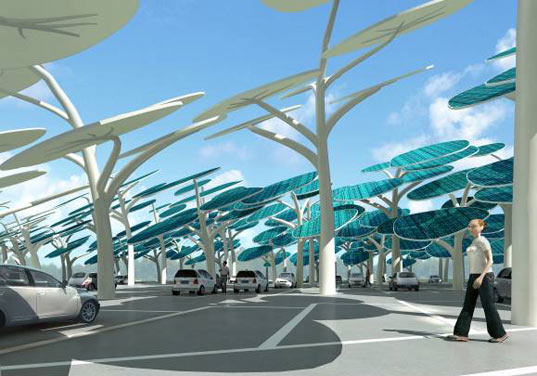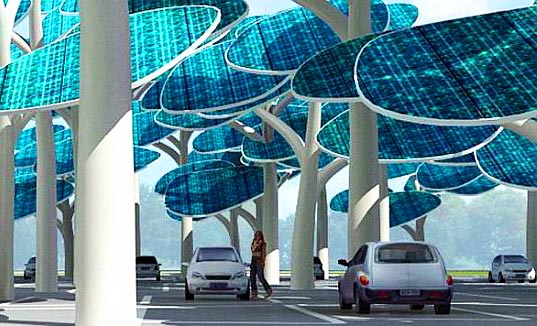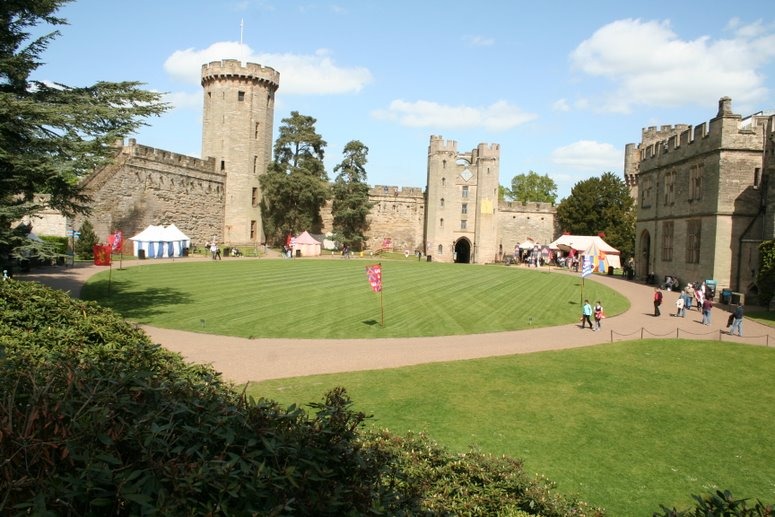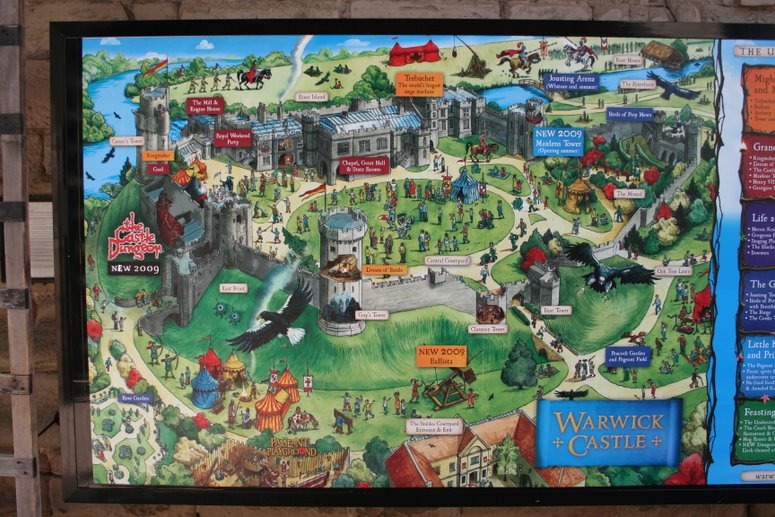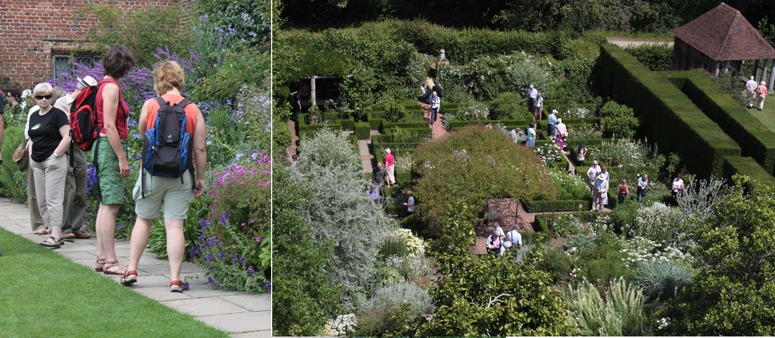Great to see ideas in sustainable design tackled with an artistic sensibility! This solar forest charging system for parking lots could equally well be located on a roof as on a ground site enabling cars to charge-up as well as remain cool in warm conditions.
Yearly Archives: 2009
Green modes of transport
 Most of us I suppose are more familiar with the car as a way of getting from A to B than we are the camel…
Most of us I suppose are more familiar with the car as a way of getting from A to B than we are the camel…
…and this has consequences for the environment. Camels are quite adaptable to arid, stony, sandy etc places with not terribly much water available.
Cars on the other hand, despite the advantage of sleek appearances, have a few drawbacks. They don’t seem to be so economical on fuel, are not great company and don’t substitute for food in an emergency.
Camels can be found in gardens…cars are yet (unless Tom can correct me here) to inspire their own brand of garden…
Source: http://www.blogcdn.com/www.autobloggreen.com/media/2009/01/tesla-with-camel.jpg
Historic garden management at Warwick Castle
I drove from Kenilworth Castle, managed by po-faced English Heritage, to Warwick Castle, managed by fun-loving Madam Tussauds, who also run a little waxworks museum in London. The poster, below, gave me cold shivers, and I would not want many historic properties to be run like this. But the actual treatment of the grounds seemed tasteful and enjoyable. And medieval castles were exceedingly busy, so the crowds are like ‘props’ in recreating the bustle of the middle ages. The big problem with management by English Heritage and the National Trust is that they both own far too many properties and want to develop a ‘brand’ in property management. Diversity is better. The comparison with Sissinghurst Castle Garden is instructive.
Please do not visit Sissinghurst Castle Garden
In the interests of conservation, please do not visit Sissinghurst Castle Garden. Unless of course, you are a garden designer, owner-designer or historian: in which case you have no alternative and should see our page on Sissinghurst garden visits.
Sissinghurst Garden should never have been marketed as a destination for coach parties, not even for the good ladies of the Gateshead Woman’s Rural Institute. I reached this elitist conclusion in the course of a visit to Sissinghurst Garden on 10th July 2009. At 10.55 am there was a traffic jam in Sissinghurst Village and it then took 15 minutes to negotiate the single-track road from the ‘turn-off’ (double entendre intended) to the Alton Towers-ish car parks. Luckily, an electric float was available for transfers to the Sissinghurst Ticket Office. We had to join a long queue for timed tickets to enter the garden and were given a ticket with a 30 minute wait for the 12 noon entry. Then we spent 20 of those 30 minutes queuing for coffee. There was no timed ticket system for the toilets but it was necessary to queue again, even for the urinals. It was not quite like visiting Bluewater Shopping Centre on the last Saturday before Christmas, but there were similarities.
Inside at last, poor old Sissinghurst Garden looked over-crowded and rather tired. The main show of white in the famous White Garden was sweaty T-shirts and some tasteless muts were dressed in reds, yellows, blues and other colours too. I asked an employee if it was often as busy as this. She said we were lucky to be here on a quiet day.
Remembering Adam Nicholson’s plea for Sissinghurst, to change and to become the World Lesbian Capital. I remarked to my wife that if she encountered any hot lesbian action in the undergrowth, my blog would benefit from a few good nipple shots. Escaping from the crush, we went to see Adam Nicholson’s new vegetable garden. It is no re-creation of Young Adam’s boyhood rural idyll, or his teenage fantasies. It is a high-tech production facility for the restaurant. We ‘invested’ in 2 coffees and 2 slices of cake, paying £10.80 for them and remembering the bargain eats we have so often enjoyed in motorway service stations.
It all makes me wonder if Sissinghurst should become a Theme Park, managed, like Warwick Castle, by Madame Tussaud’s. Phases 11 and 12 of the Sissinghurst International Development Programme (SIDP) are going to involve cows and pigs. Why not have tended by yokels in smocks with pretty milkmaids in Tess of the d’Urbervilles outfits? Just think of the merchandising opportunities. Later phases of the SIDP are expected to include:
13. The Sissinghurst Blue Garden (over-18s only)
14. The Sissinghurst Trump Hotel
15. The Sissinghurst Resort Spa and Conference Centre
16. The Sissinghurst Golf Course
17. The Sissinghurst International Airport
18. Sissinghurst Eurostar Station
19. The M2-Sissinghurst Link Road
20. The Sissinghurst range of Gay and Lesbian Sex Toys
Creating urban dreams

OMA have an exciting project in conceptual development at the Coolsingel in Rotterdam. The use of pure form and warped space is a breath of inspiration…
Beyond the visual gestalt are some incredible opportunities for the integration of strong landscape concepts in a project which plays with the relationship of inside and out, of the city to the building and of the existing built fabric to the new.
This project potentially asks among other landscape questions about the greening and social vibrancy of atria…and how this greening and socially active space might be continuous/discontinuous etc with the outer urban realm..
Source http://www.oma.eu/index.php?option=com_projects&view=project&id=1071&Itemid=10
Fishbourne Roman Palace Garden
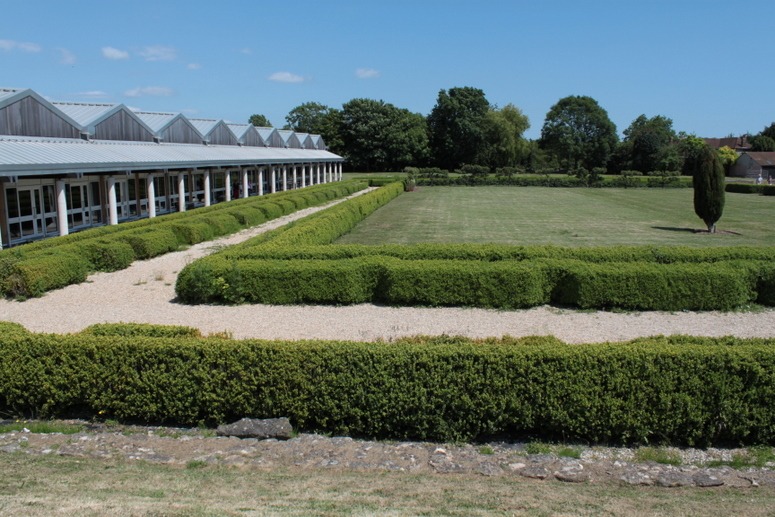
The re-created Fishbourne Roman Garden looks too much like a renaissance garden, with a 'formal' hedge and a mown lawn. The museum building, left, is passable but it would have been a much better idea to use the columns to make a proper peristyle with a tiled roof. Terracotta-coloured sheet steel would be an improvement.
Barry Cunliffe led the excavations at Fishbourne from 1961-8 and wrote a most useful book on the subject. Located near Chichester on the south coast, Fishbourne is the best example of a Roman garden in England. But I am doubtful about Cunliffe’s interpretation. He began with the proposition that ‘there was a formal and it was discoverable by excavation’ (Cunliffe’s italics). This assumes his conclusion and the term ‘formal garden’ comes from a much later period in garden history. This has been a problem with much that has been written about Roman gardens. Since the term ‘Renaissance’ means ‘re-birth’ too many people have concluded that we can discover the form of Roman gardens by studying renaissance re-incarnations. But there are several other sources of information about Roman gardens and they do not seem to confirm this picture (or ‘formal’ hedges and a ‘formal’ lawn : (1) the frescos at Pompeii, Herculaneum and elsewhere; (2) excavation of garden sites in Southern Europe; (3) texts, such as Pliny’s letters. None of these sources confirm the above re-creation of Fishourne. The planting design comes from a pattern of trenches, but there is no evidence that box was planted in these trenches. Cunliffe calls them ‘bedding trenches’ (p.134) and my experience of growing hedges and flowers inclines me to the belief that they were more likely to have been planted with flowers. Pollen analysis yielded no information but box is of course a tree (Buxus sempervirens). It can grow on very dry soils and it has has strong fibrous roots. Digging up one of the box trees shown on the photograph ( planted at Fishbourne in the 1960s) would provide useful evidence – my guess is that the roots would be found to have outgrown and destroyed the archaeological Roman ‘bedding trenches’ (in fact I do not think they should have been planted, for this very reason – who knows what information future archaeological techniques might otherwise have discovered?). William Melmoth’s translation of Pliny’s Letter LII to Domitius Apollinaris [ Bosanquet, 1909 edn] includes this passage: ‘You descend, from the terrace, by an easy slope adorned with the figures of animals in box, facing each other, to a lawn overspread with the soft, I had almost said the liquid, Acanthus: this is surrounded by a walk enclosed with evergreens, shaped into a variety of forms.’ I wonder if the tree, shown as a conical specimen on the photograph, was box clipped into an animal form. Conical specimen trees and lawns are modern concepts. Like everyone, I would like to know more.

